Biographies
Frank Mittelbach
Frank Mittelbach studied mathematics and computer science at the Johannes-Gutenberg University, Mainz. In 1989 he joined EDS, Electronic Data Systems, working in a newly formed group for document processing using TeX and other tools. In his current position he is responsible for concepts and implementation for remote monitoring and management of distributed systems and networks.

His interest in the automated formatting of complex documents in general, and in LaTeX in particular, goes back to his university days and has become a major interest, perhaps a vocation, and certainly it is now his “second job”. He is author or co-author of many and varied LaTeX extension packages, such as AMS-LaTeX, doc, multicol, and NFSS: the New Font Selection Scheme.
At the TUG conference at Stanford University in 1989, he gave a talk about the problems with LaTeX 2.09, which led to his taking on the responsibility for the maintenance and further development of LaTeX. This effort is generally known as the LaTeX3 Project and in the capacity of technical director of this project, he has overseen the original major release of LaTeX2ε in 1994 and the, by now, 15 subsequent maintenance releases of this software.
His publication of many technical papers on LaTeX and on general research results in automated formatting brought him in contact with Peter Gordon from Addison-Wesley. Peter and Frank inaugurated the book series Tools and Techniques for Computer Typesetting (TTCT), with Frank as series editor. The LaTeX Companion (1994) was the first book of this series whose titles by now cover LaTeX in all its facets. Forthcoming works will expand that core to cover other typesetting and information processing tools and concepts.
In 1990 Frank presented the paper E-TeX: Guidelines for further TeX extensions, which explained the most critical shortcomings of TeX and argued the need for its further development and for research into the many open questions of automated typesetting. This was the first time the topic of change or extension had been openly discussed within the TeX community and, after getting some early opposition, it helped to spawn several important projects, such as eTeX, Omega, and NTS. He is now interested in bringing together the fruits of these TeX extension developments, e.g., the Omega and eTeX projects, to get a stable, well-maintained, and widely available successor of TeX on which a future LaTeX3 can be based.
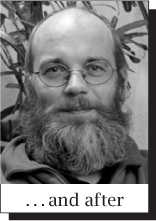
Frank lives with his wife, Christel, and their three sons, Arno (age 19) and the twins Burkhard and Holger (age 6), in Mainz, Germany.
Michel Goossens
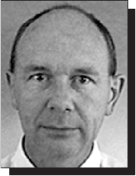
After finishing his Ph.D. in high energy physics Michel Goossens joined CERN, the European Laboratory for Particle Physics in Geneva (Switzerland) at the beginning of 1979, where he worked for a few years as a research physicist, and then moved on to software support in the Informatics Technologies Division.
Over the years he has worked with several typesetting systems: LaTeX, of course, but also, more recently, HTML/SGML/XML. As a large international scientific laboratory, a large fraction of the thousands of physicists and engineers working at CERN use LaTeX for publishing their papers or for writing their documentation. Therefore, since the late 80s Michel has been involved in developing and supporting tools related to TeX and, especially, LaTeX.
A milestone in his LaTeX life was a meeting with Frank and Chris at CERN at the end of 1992, where they gave a talk on LaTeX3. After their seminar Michel showed them the “Local TeX Guide” that he and Alexander Samarin had written and proposed to extend the material and turn it into a book. This was the birth of the first edition of The LaTeX Companion, which was published at the beginning of 1994. Using his experience in graphics and web presentation, he also co-authored The LaTeX Graphics Companion (1997) and The LaTeX Web Companion (1999), both of which appeared in the TTCT series.
Michel has occupied various positions in the TeX world. He was president of GUTenberg, the French-speaking TeX users Group (1995–2000), as well as president of TUG, the TeX Users Group (1995–1997).
For the past three years he has acted as the CERN Focal Point for the EU-funded TIPS (Tools for Innovative Publishing in Science) project. Within the framework of that project he was responsible for studying how XML tools can be optimally integrated into a framework for efficiently handling electronic information, especially for scientific documents. In particular, he looked at the complementary roles played by LaTeX and MathML for mathematics, SVG for graphics, PDF for typographic quality output, and XHTML or DocBook for structural integration in the Web environment.
He lives in the Geneva area and enjoys reading, watching a good film, walking along the lake or in the beautiful countryside, and visiting museums.
Johannes Braams
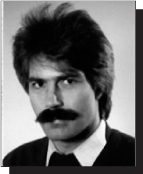
Johannes Braams studied electronic engineering at the Technical University in Enschede, the Netherlands. His master’s thesis was on video encoding, based on a model of the human visual system. He first met LaTeX at the dr. Neher Laboratories of the Dutch PTT in 1984. He was a founding board member of the Dutch speaking TeX User Group (NTG) in 1988 and participated in developing support for typesetting Dutch documents.
He started work on the babel system following the Karlsruhe EuroTeX conference in 1989 and has been a member of the LaTeX3 project since the EuroTeX conference at Cork in 1990. In addition to babel, Johannes is the current maintainer of a number of LaTeX extension packages, such as the ntgclass family of document classes, the supertabular package, and the changebar package.
Johannes is still working for the Dutch PTT, nowadays known as KPN, primarily as a project manager for IT related projects. He lives with his wife, Marion, and two sons, Tycho (age 11) and Stephan (age 9), in Zoetermeer.
David Carlisle
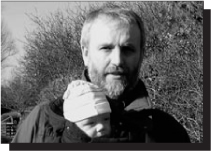
David Carlisle studied mathematics at the University of Manchester and then worked as a researcher in the Mathematics and Computer Science departments at Cambridge and Manchester, where he started using LaTeX in 1987. He joined the LaTeX3 team in 1992, just prior to the start of development work on LaTeX2ε.
For the last six years he has worked at NAG Ltd. in Oxford, UK, primarily on projects connected to the development of XML-based languages for the representation of mathematical expressions and documents. He is an editor of the OpenMath specification and was an invited expert on the W3C Math Working Group responsible for MathML, becoming an editor of the MathML 2 Recommendation. Currently he is an editor of a proposed update to ISO/IEC TR 9573, the “ISO character entities”. This allows a wide range of characters to be entered into XML and SGML documents using only ASCII characters, with syntax such as γ to denote γ.
David has also taken an interest in the XSLT language and is a major contributor to the xsl-list discussion group for that language. He has reviewed or acted as technical editor on several XSLT-related books. He lives in Oxfordshire with his wife, Joanna, and their son, Matthew (4 months).
Chris Rowley
When not indulging his addiction to travel, Chris lives in London with his wine cellar, his ceramic collection, and his memories. These last include some now rather hazy ones of the 60s, when he was addicted to mathematics but also dipped his mind into computing, both the theory of programming (pretty wild stuff back then) and number crunching (nice streamers from the paper tape).
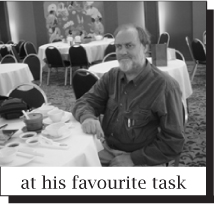
It was not until the early 80s that he discovered, on a newly occupied desk, a TV-like object that was connected to a computer and could help him do creative and useful things, such as producing a single page of beautiful typeset mathematics. That was not done using TeX—so it took two days to complete that single page; but it made him realize what was possible and set him thinking about a better way to achieve it. He is very grateful that he then very soon stumbled across TeX and, not long after, LaTeX; the latter being especially providential, as his colleagues included six mathematical typists who needed something that would work for them too. A few years on he heard about a guy called Mittlebach-andSchöpf (sic) in Mainz and the rest is ... to be continued.
Fifteen years later and Chris Rowley is now a senior member of the Faculty of Mathematics and Computing at the Open University, UK. He has been a manager and active member of the LaTeX3 Project Team since its beginning, when he foolishly believed that it would all be done in two years or so. He has been on too many boards and committees, one of the most pleasant being the editorial board for Tools and Techniques for Computer Typesetting, and he has graced various offices in the TeX world, including Chair of UKTUG and a vice-presidency of TUG.
As the largest international player in industrialized mass education for home-and workplace-based university-level customers, the Open University has become a major multi-media publishing corporation with, despite commercial competition, an under-resourced, LaTeX-based production system for its mathematical output. As a mathematician who already understood a fair bit about the production of mathematical texts, Chris was well placed to play a vital rôle in the political, administrative, and technical aspects of establishing this system in the mid-80s.
He is now actively engaged on research into the automation of all aspects of document processing, especially multi-lingual typography for multi-use documents. By contrast, over the decades he has also done his share of practical work on LaTeX-based systems in production environments and acted as consultant on the digitization of mathematical texts to a number of standards bodies, companies, and organizations.
These activities have led Chris to the conviction that TeX has but two important long-term future uses: one is as a vernacular within less formal electronic communications between mathematicians, whilst the other is as a treasure trove of wonderful algorithms, especially for mathematical typesetting. He believes, moreover, that extending the monolithic design and intricate models of the TeX software system will not lead to powerful and flexible typesetting software for the 21st Century, ... but it’s more fun than doing crosswords.
Christine Detig & Joachim Schrod
In 1982, Christine Detig met TeX on reel-tape during her computer science studies, resulting in her becoming a founding member of DANTE, the German TeX Users Group. Her early software experiences were gained around the TeX workbench, resulting in the formation of a small business in the provision of TeX distributions. Spreading TeX knowledge as part of her job as a research assistant at TU Darmstadt resulted in a book for TeX beginners: Der LaTeX Wegweiser. Meanwhile, visiting lots of international conferences has led to many friendships with the eclectic crowd of TeXies. Meet her there for a nice chat about the Future of TeX!
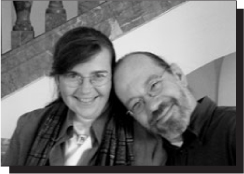
Joachim Schrod also started to use TeX in 1982 and he is another founding member of DANTE. He wrote and supported the international version of LaTeX until LaTeX2ε came along. He has been involved in lots of TeX activities, most of them too long ago to be remembered, but among the more enduring are the creation of CTAN and the TeX Directory Structure. Today he is the CEO of a consulting company, where he strives to translate between business and technical people.
Christine & Joachim live in Rödermark, Germany.
